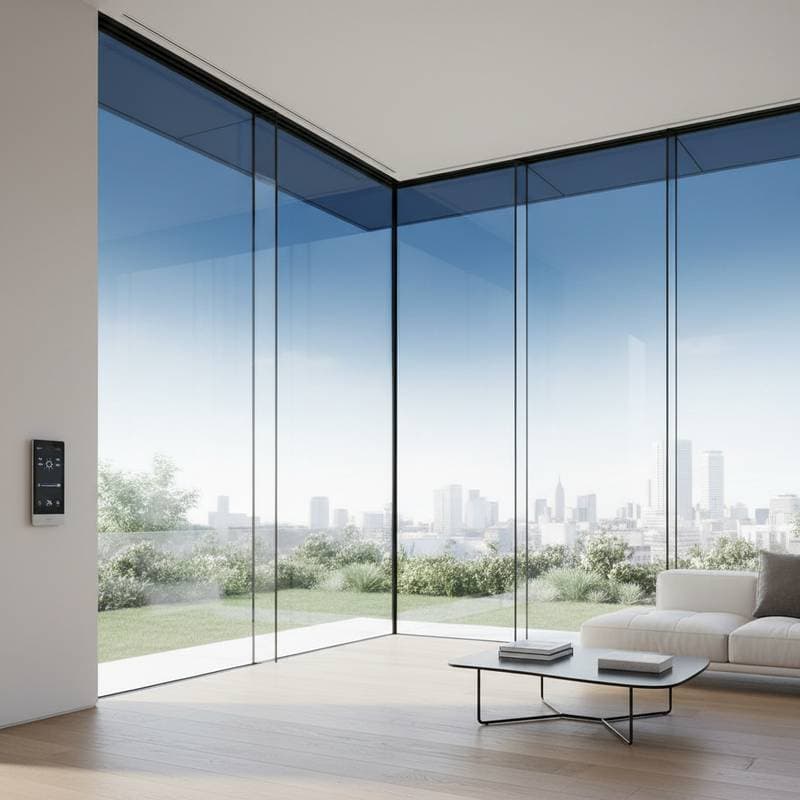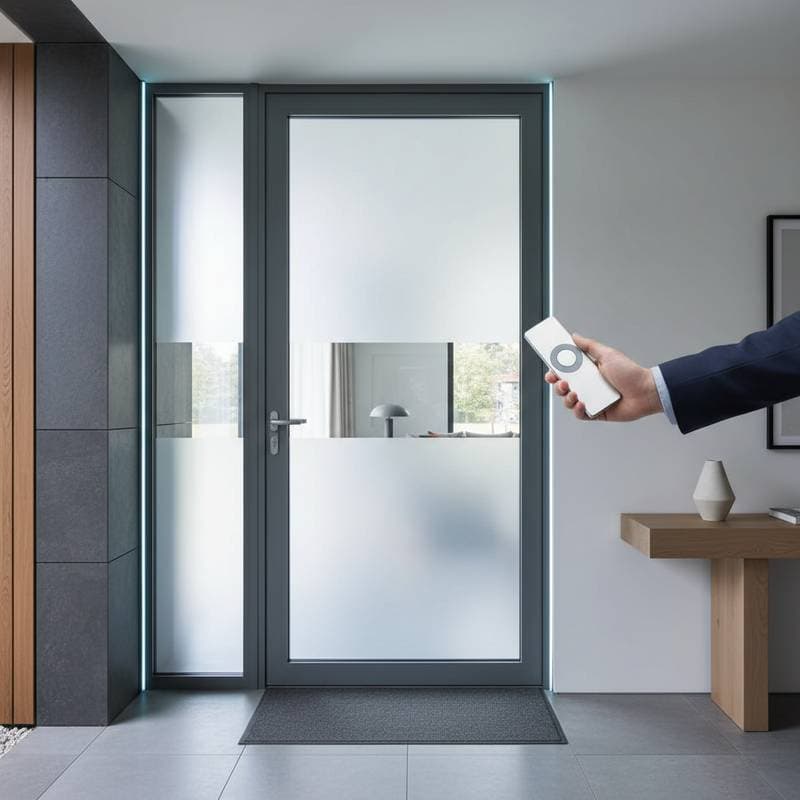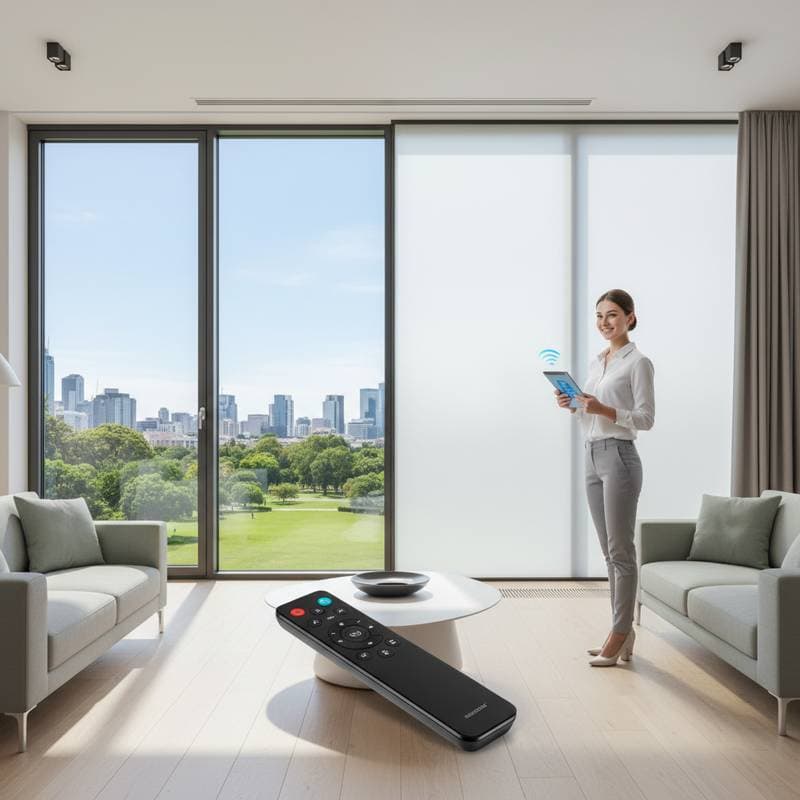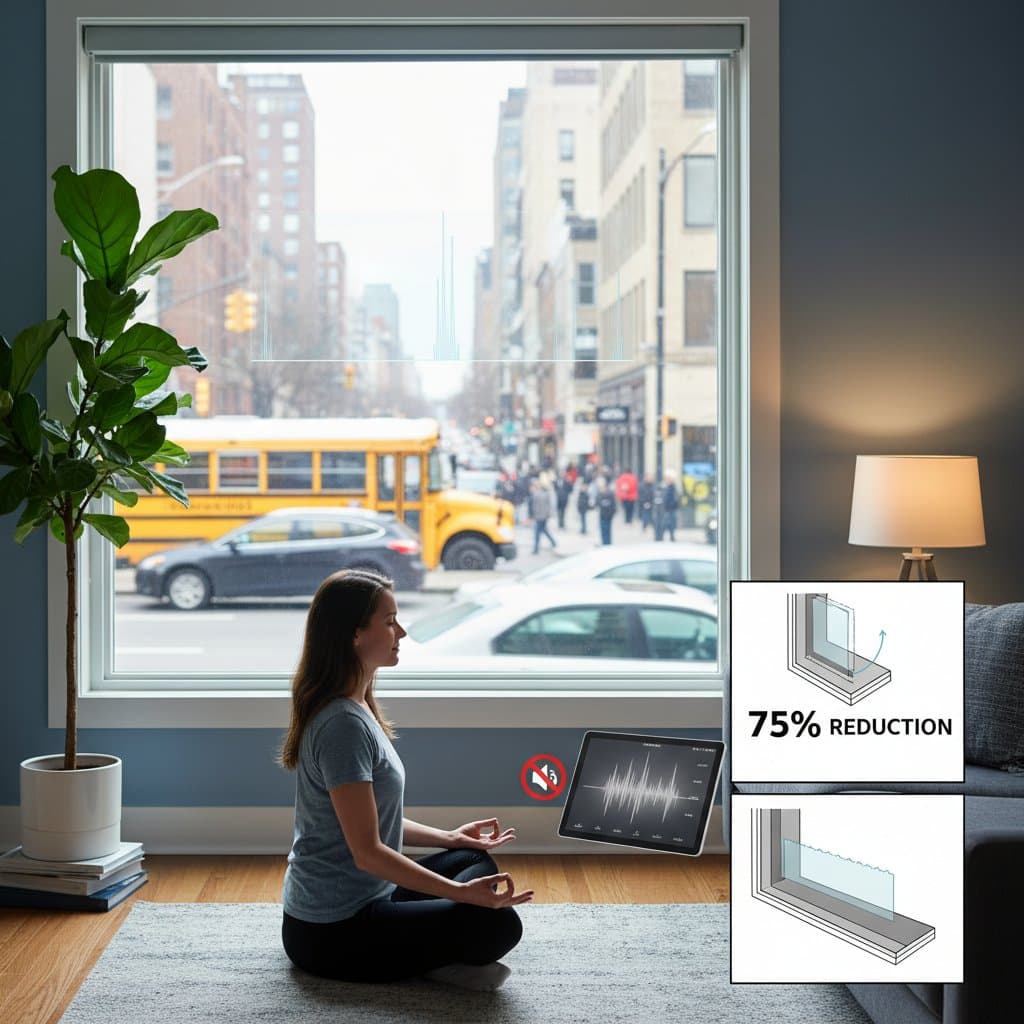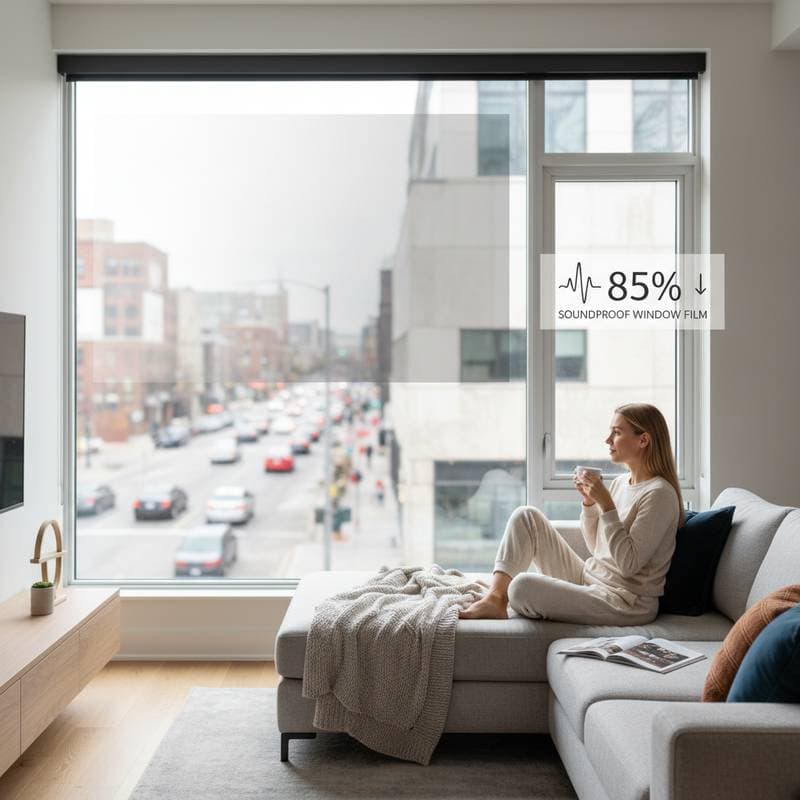Smart Windows for Effortless Light Control Without Blinds
Home exteriors gain character from more than just paint or siding. Windows shape the facade, influence light entry, and link indoor spaces to the outdoors. Electrochromic smart windows, which adjust tint on command, have evolved from experimental ideas into reliable upgrades. These features combine technology with comfort and contemporary design, enabling precise light management via simple controls. Homeowners gain instant privacy or brightness without relying on blinds or drapes.
These windows also promote energy conservation and a streamlined appearance. They integrate smoothly into modern or traditional architectures, preserving clean lines with unobstructed glass surfaces.
Implementation Strategies
Budget Option ($4,000 - $8,000)
- Install retrofit smart films on existing windows. These slim applications use electrical currents to vary opacity, operable via remote or app.
- Target smaller areas, such as kitchen or office windows, to control expenses.
- Include a premium control center compatible with voice assistants for seamless operation.
Intermediate Option ($9,000 - $20,000)
- Install pre-manufactured smart glass units with built-in wiring and tint mechanisms. Such panels deliver superior clarity and longevity compared to films.
- Incorporate low-emissivity coatings to enhance insulation, lower utility bills, and shield interiors from ultraviolet rays.
- Add sensors that modulate tint according to sunlight levels, ensuring steady indoor conditions.
Premium Option ($21,000 - $40,000)
- Deploy whole-home electrochromic systems from reputable brands. Multi-layered designs allow fine-tuned opacity adjustments.
- Program automated cycles aligned with daily light patterns to optimize appearance and performance.
- Select bespoke frame colors and embedded panels that harmonize with the residence's architecture.
Material Selection Overview
- Windows: Electrochromic panels feature clear, gray, or bronze bases. Pair black or charcoal aluminum frames with modern facades. Interior wood claddings in white oak or walnut add interior warmth. Matte black or brushed nickel hardware suits technical or blended aesthetics.
- Doors: Incorporate smart glass into pivot or French patio doors for uniformity. Fiberglass models with insulated cores support thermal performance, while aluminum-framed versions align with sparse designs. Stainless steel lever handles ensure unified styling.
- Siding: Match advanced windows with durable exteriors. Fiber cement or engineered wood provides contemporary resistance to elements. Vertical patterns accentuate verticality beside smooth glass.
- Trim and Details: Employ slender, moisture-resistant composite or PVC trim. Deep charcoal or graphite borders frame the glass effectively. Subtle elements like metal awnings or slim projections offer shelter and visual enhancement.
Upkeep Considerations
Smart windows ease routines yet demand proactive care. Properly installed electrochromic glass proves durable, though controls require periodic adjustments. Shield wiring from dampness, particularly external connections. Use gentle, non-abrasive cleaners on surfaces, steering clear of ammonia products that could harm layers.
Retrofit films might need renewal every few years from adhesive or circuit wear. Built-in units endure as long as standard insulated glass. Account for future control upgrades in financial plans. In moist or seaside areas, specify edge seals against conductive layer corrosion.
Common Pitfalls to Sidestep
- Underestimating Privacy: Tinted states reduce visibility but permit some interior views at night under illumination. Supplement with light curtains or outer shades for total seclusion.
- Omitting Power Reserves: Electricity powers these systems. Lacking backups leaves tints fixed during outages. Install compact uninterruptible supplies for reliability.
- Incompatible Pairings: Steer from cheap vinyl frames prone to heat distortion with electrochromic glass. Prefer thermally broken aluminum or composites for endurance.
- Incomplete Budgeting: Glass alone understates totals. Secure comprehensive estimates covering setup, electrical, and structural elements.
Integrating Smart Windows into Minimalist Exteriors
Minimalist designs prioritize simplicity, balance, and focus. Smart windows advance this by eliminating visible shades. Expansive glass responds to light and needs, fostering serene environments.
Picture windows stay transparent early, then tint progressively with rising sun, upholding uniform views without intervention. Frameless or slim-framed glass complements stucco, metal, or cedar exteriors.
Implementation Strategies
Budget Option ($3,000 - $7,000)
- Upgrade select sun-exposed windows with smart inserts to evaluate efficacy.
- Favor basic square or rectangular forms for straightforward fitting and lower costs.
- Equip with app-enabled hubs for remote management.
Intermediate Option ($8,000 - $17,000)
- Use tinted smart glass in narrow aluminum frames finished in gray or black powder coat.
- Embed gradual-adjusting sensors for all-day visual harmony.
- Install perimeter LED lights to accentuate evening reflections.
Premium Option ($18,000 - $35,000)
- Outfit entire elevations with floor-to-ceiling electrochromic sheets.
- Feature concealed tracks for tinted sliding doors.
- Link automation to climate systems for integrated efficiency.
Material Selection Overview
- Windows: Cornerless or strip configurations build rhythmic facades. Neutral gray electrochromic glass ensures enduring style.
- Doors: Matching sliding or pivot doors extend the theme. Select straight satin stainless handles over decorative ones.
- Siding: Opt for even stucco or oversized composites. Maintain sharp, uniform seams.
- Trim and Details: Restrict trim to underscore geometry. Slim aluminum dividers cleanly delineate glass from walls.
Upkeep Considerations
Exposed minimalism demands vigilant cleaning to avoid flaws. Electrochromic surfaces resist smudges thanks to protective layers. Inspect controls biannually for prompt response. For external residues like dust or salt, apply low-pressure rinses prior to wiping.
Common Pitfalls to Sidestep
- Bypassing Samples: Inspect tint variations firsthand; screens misrepresent shades and densities.
- Frame Mismatches: Off grays disrupt polished looks.
- Overlooking Illumination: Subdued outer lights enhance reflections without excess brightness.
Harmonizing Colors and Styles
Unified schemes elevate smart window setups. The glass's reflectivity suits cool or warm hues equally.
Recommended Palettes:
- Graphite and Ivory: Bold dark frames against pale siding yield striking equilibrium.
- Clay and Bronze: Terracotta exteriors echo bronze glass for organic warmth.
- Charcoal and Warm Wood: Ebony frames with cedar or redwood evoke refined rusticity.
- Slate and Silver: Metal sidings fuse with gray glass for industrial polish.
- Sandstone and Clear: Light stone or stucco with untinted glass preserves luminosity in sunny regions.
Extend coordination to hardware and fixtures. Matte or brushed surfaces promote flow. Glossy elements risk clashing with glass sheen, causing unwanted reflections.
Pre-Planning Photography Guide
Document existing conditions to inform choices. Quality images aid precise selections and simulations.
Homeowner Checklist:
- Photograph broad views from varied perspectives to assess rooflines, scales, and illumination.
- Detail frames, trim states, and siding textures up close.
- Catalog style markers like columns, vents, or peaks.
- Consider community surroundings and association rules on changes.
- Track sunlight progression to pinpoint glare or warmth hotspots.
Achieving Seamless Integration
Smart windows reshape light and seclusion experiences. They fuse innovation with form, making glass an adaptive element attuned to lifestyle.
Begin with targeted installations to gauge fit and appeal. Comprehensive overhauls yield refined exteriors, superior livability, and sustained efficiencies.
Electrochromic solutions suit sparse moderns to inviting contemporaries. Aligned frames, walls, and edges secure unity, while prudent planning sustains feasibility.

